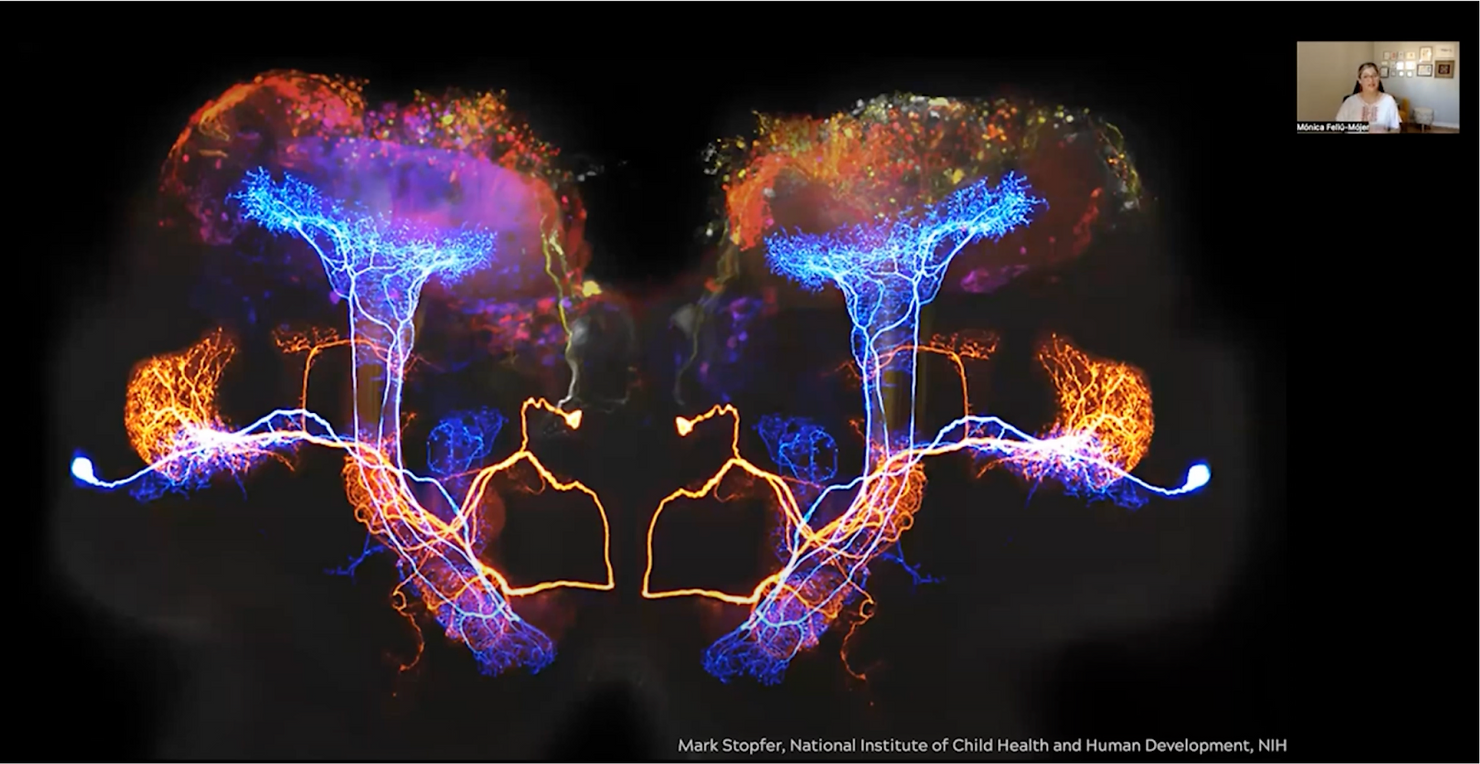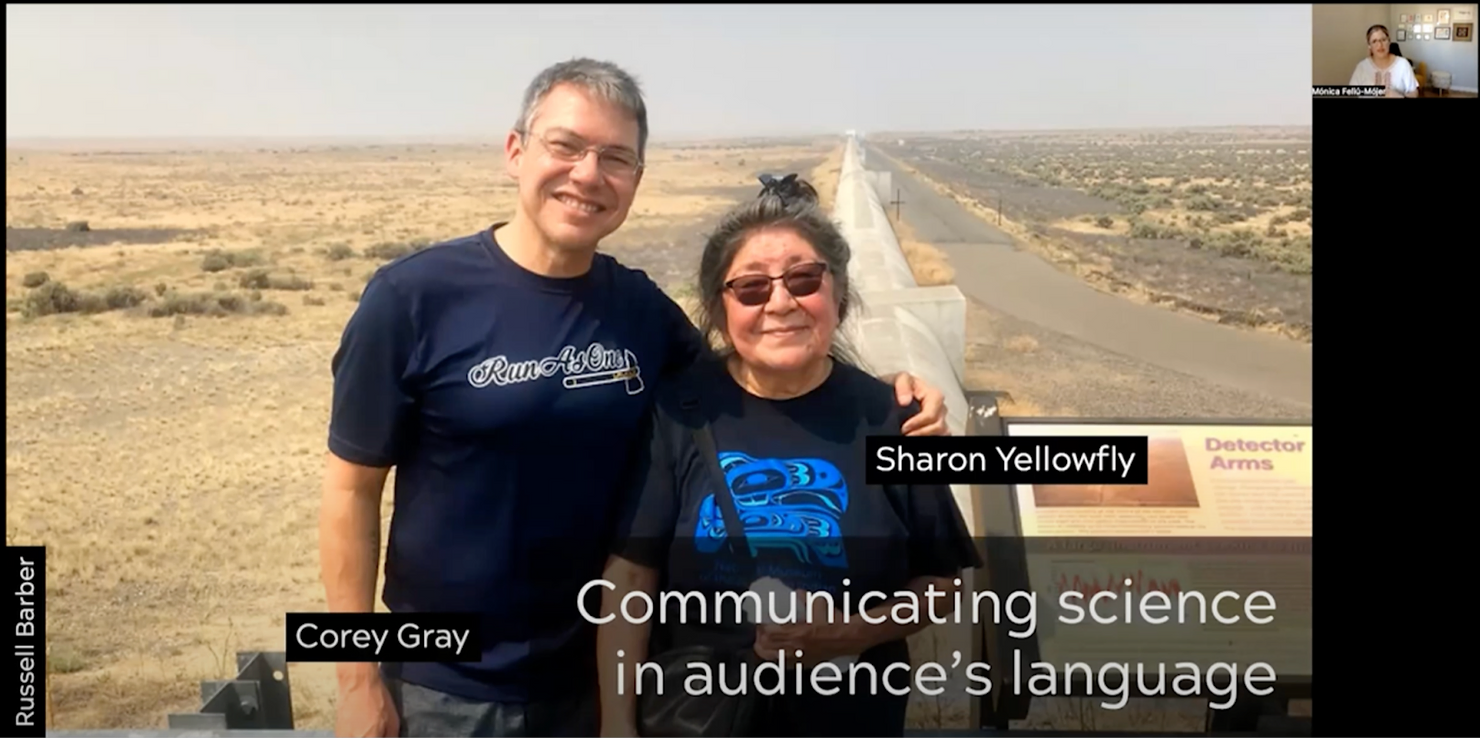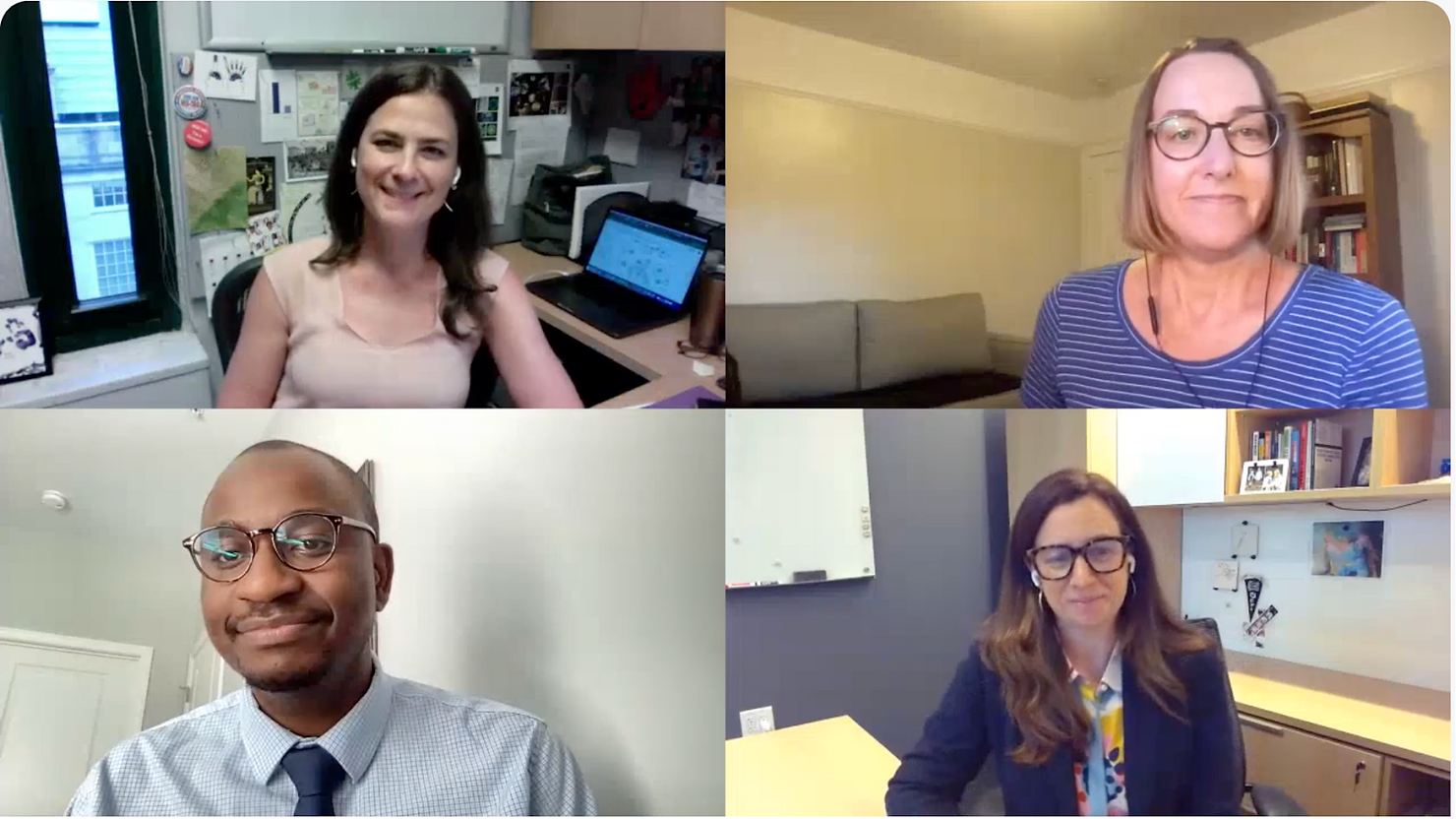SciPEP 2023 Part 3: Redefining Relevance in Basic Science Communication
SciCommBites X SciPEP collaboration: This SciCommBites summary is the third in our coverage of the 2-day SciPEP conference, focusing on the last main session from Day 1.
TL;DR
The session explored a novel view on what it means to make basic science “relevant” to different publics. Traditionally “relevance” is defined as “utility” of science to society– which is not a frame that works well (or at all) for communicating basic research. Here, science communication scholars and practitioners present an expanded definition of relevance as connection to people’s identities, values, and everyday lives.
| We learned that: Relevance can be defined as connection, which is broader than just utility. Connection is rooted in one’s values, prior knowledge/experiences, language, culture, and self-reflection.To establish relevance requires that we establish relationships, invest in mutual learning between scientists and publics, and that we step away from the dominant Western paradigms of science communication.The utility frame is still valuable, but it should not be the default approach to science communication. How to establish relevance through utility or other forms of connection requires first setting strategic, audience-centered, communication goals.Further research, training, and practice are still needed to better understand how to employ relevance effectively in basic science communication. |
The Background
Day 1 of SciPEP 2023 explored new insights and findings based on research and expertise in the context of basic science communication. The main questions focused on the extent to which basic science communication may require unique strategies and tactics that are different from those of applied science.
In our prior coverage of the first two main sessions of Day 1, we learned about:
- public identities and views of basic science;
- basic scientists’ identities and views on science and communication;
- how public and scientists views converge and diverge; and
- new insights on future directions for basic science communication research and practice.
The last main session of Day 1 debuted insights on a relatively new topic in science communication: relevance in the context of basic science. The SciPEP team has had conversations about this topic for two years, but this session is the first time it has been discussed as a major theme at a broad public science communication and engagement forum. The session explored and expanded views of relevance centering on establishing connections with different publics outside the usual “utility of science” frame.
The significance of this topic is derived from the primary reason why SciPEP was created. In his opening remarks for the conference, the Special Assistant to the Director at the Department of Energy (DOE) Office of Science, Rick Borchelt explained that the DOE-Kavli partnership is motivated by a shared interest in “how basic scientists engage the public around work that does not appear to have an immediate application or payoff.” Borchelt emphasized how conversations about science communication have traditionally revolved around default topics, such as “misinformation, disinformation, fake news, and how to make your science “relevant”– which almost always was meant to find and communicate the utilitarian value in your research, no matter how tenuous the connection.” (To learn more about the information covered in the opening session, see part 1 of our SciPEP coverage.)
To open the session, Brooke Smith, Director of Science and Society at The Kavli Foundation, highlighted the pressing need to find broader perspectives on relevance, connection, and utility as they relate to communicating basic science. Smith reflected on this need in light of ongoing SciPEP conversations about the gap between the science interests of the public (i.e., pay-off minded, hope for future outcomes) and those of basic scientists (i.e., process-minded, joy in the research) when it comes to science communication (see our summary of this research by Chris Volpe of ScienceCounts or watch the full session). She asked, “How can we think about being less process-minded in our communication and more payoff-minded so that we’re connected to what audiences want?” Does this mean that basic science is only relevant if discussed in the context of a utilitarian pay-off, such as providing the building blocks for energy solutions or vaccines? Smith shared that in conversations leading up to the conference, SciPEP team and members of the community wrestled with these questions, raising concerns about centering basic science communication and engagement on a utilitarian framework. As a result, this conference session asked: How might we think more broadly about what relevance and connection is for basic science?
Relevance or Connection?
One of the leading voices supporting a broader interpretation of what relevance means in the context of basic science communication is Mónica Feliú-Mójer, Director of Communications and Science Outreach for Ciencia Puerto Rico (CienciaPR). In a pre-recorded presentation, Feliú-Mójer challenged the paradigm that for scientists to demonstrate relevance, they need to demonstrate the immediate or eventual utility of their research. Instead, she called for alternative discussions where relevance is focused on connection.
In this talk, Mónica Feliú-Mójer addressed four main questions:
- What does it mean to make basic science relevant?
- How might we make basic science relevant?
- Who decides what’s relevant?
- Is relevance the right frame for basic science?
In addressing her first question, Feliú-Mójer explored a counter definition of relevance that uses a cultural lens of connection. Drawing from her own identity and experience as a Puerto Rican scientist, she regards relevance as connecting science to identities, cultures, and contexts. In other words, making basic science relevant means connecting to people’s everyday lives, who they are (e.g., customs, beliefs, knowledge, and identities), and what they care about. Relevance is not always utility, but rather connection.
To illustrate this concept, Feliú-Mójer shared an image of neurons in a fly brain (Figure 1). She explained how the image makes science relevant to her: she is a neurobiologist by training, she finds the image to be beautiful, and she sees it as a metaphor about the importance of connection – because, for a neuron, “true power comes from connections to other neurons.” Feliú-Mójer then encouraged the audience to think deeply about what makes them feel connected to science, asking: “What makes science relevant to you?”

To address her second question (how might we make basic science relevant?), Feliú-Mójer explained that relevance as connection requires “leveraging the cultural knowledge, prior experiences, and identities of an audience to make science more pertinent and valuable for them.” This relevance can be established through multiple means:
- finding common ground (e.g., shared hobbies or spiritual beliefs);
- using audiences’ first languages (Figure 2);
- connecting to previous knowledge, life experiences, and values through culturally relevant analogies, metaphors, music, and popular culture references;
- making science practical, where possible (e.g., in health contexts); and
- practicing reflexivity – self-examination to identify biases, identities, and privileges that may cause communication barriers to audiences.

As in so many science communication contexts, it is critical to ask Feliú-Mójer’s third question – who decides what is relevant? She emphasized that any attempts to establish the relevance of science must center the audience. In a poignant example, Feliú-Mójer shared how she used reflexivity to examine her own biases as a hearing person working with the deaf community on the project Aquí Nos Cuidamos, which translates to ‘Here we Take Care of Each Other.’ She had originally believed that adding subtitles to videos would be enough to communicate with the deaf community. She then learned that due to systemic inequities and educational barriers, some deaf people lack the proficiency needed to read captions. Her team then took action to address those inequalities by adding sign language interpretation to their videos.
Thinking about relevance as connection means integrating audiences’ identities and cultures beyond the pure utility of research. This, according to Feliú-Mójer, is “precisely why we need engagement to establish dialogue, build relationships, and have mutual learning with audiences.”
Is relevance the right frame for communicating basic science? Feliú-Mójer says “yes,” when a broader definition of relevance is used – one that is rooted in connection, culture, and context – not only utility. Expanding relevance to include connection is especially important when engaging diverse audiences and is believed to lead to more effective communications.
Mónica Feliú-Mójer closed her presentation with further questions/challenges in relation to the use of relevance in basic science contexts, namely:
- We need more research to better understand relevance – how does relevance relate to values, culture, context, and political ideology?
- We need more training for people to communicate basic science using this framework of relevance – how can we offer such training?
- We need more opportunities to practice – how can we provide such opportunities to practice and hone those communication skills?
| The takeaways here are: Relevance is often used to mean utility and future applications, which makes relevance seem implausible in basic science contexts.Taking a cultural lens, relevance means more than utility – it means connecting science to identities, cultures, and context.Relevance can be established through various means (e.g., finding common ground; connecting to previous knowledge, experiences, or values; practicing reflexivity; making science practical; and using people’s first language). Deciding on what is relevant involves centering the audience.Relevance can be used as a framework to communicate effectively about basic science as long as it pertains to connection, context, and culture and is not reduced to its utilitarian value. |
Feliú-Mójer’s perspective was then discussed by a panel consisting of Fanuel Muindi, Lasker/Research! America Civic Science Fellow; Founder & Chief Executive Officer at Research!America & SAi Resident Collective; Tiffany Lohwater, Assistant Dean, Communications at UC Berkeley College of Computing, Data Science, and Society, and Jeanne Garbarino, Executive Director, RockEDU Science Outreach Program at The Rockefeller University (Figure 3).

Smith asked the panelists to reflect on their own experiences and whether they have seen a tendency for scientists to default to a utility frame (a focus on expected outcomes from scientific research) when communicating basic science. They emphasized that yes, it is common for scientists to default to communicating about the utility of basic science, particularly in professional communication contexts such as when seeking funding. Additionally, this frame is heavily used in contexts where scientists are not thinking about the audiences and are thus not formulating specific goals that can help them make better connections.
Smith also asked the panelists about how curiosity might be used in the communication of basic science. Can curiosity be a “payoff” – is that enough? The panelists agreed that emphasizing curiosity and the process of basic research can help establish the relevance of science. Tiffany Lohwater explained that in her communication trainings, she asks basic scientists to emphasize why they do what they do and to identify aspects that can help them connect with their audiences. Lohwater gave the example of a neuroscientist who showed a picture of their own kids in a presentation about neurodevelopment in children to personalize “why” this kind of research is exciting and meaningful. This is one way a scientist can simultaneously focus their communication around their own curiosity and connect it to something that the audience may find relevant.
The panelists also agreed that a utility frame in science communication is not always bad. There is no one ‘general public,’ but rather ‘publics.’ Scientists and other communicators may need a utility frame to establish relevance with certain publics. The panel, reflecting on an earlier conference discussion about strategic science communication (i.e., setting clear communication goals, objectives, audiences, and tactics), asked, if we become more strategic, would we still use a relevance frame for basic science as often? Is demonstrating utility a subconscious communication goal? And if not, why do we default to a utility frame? Here, the panel reemphasized how critical it is to know your audience, to value the exploration inherent in basic science, and to be strategic with what you are trying to accomplish with your communication. Therefore, it is important to establish strategic communication goals, centered on the audience’s interests and needs (not just the communicator’s interests and needs), and use the tools and methods that best suit the situation. To learn more about strategic science communication, please see the work of John Besley and Anthony Dudo.
The panel also amplified Feliú-Mójer’s point that scientists may also be comfortable using another default when communicating with the public – the dominant science paradigm, or Western science. Scientists should be encouraged to value many types of knowledge and to adopt paradigms that are outside the dominant science culture – which requires learning to be uncomfortable, listening, and co-creating with their communities. All of this can help scientists establish connections with groups that are typically alienated from the dominant science paradigm. Fanuel Muindi noted that scientists need to be willing to get vulnerable – to listen, to co-create, to share, and to learn. Muindi emphasized the importance of integrating vulnerability and listening into science communication training to help support scientists as they try to make their science relevant through connection.
Smith then asked the panel about what they know about any practical tools for basic scientists or good examples of communicating basic science. The panel agreed that what Smith was looking for doesn’t currently exist yet – as far as they know – and there is more to be done in the context of science communication training. Jeanne Garbarino explained that making science relevant requires several “scaffolding steps.” For example, Garbarino once worked with a scientist who wanted to explain the physics of how hair inside the ear bends to create a signal that delivers sound to the brain. But the scientist felt it was important to first explain the entire anatomy of the ear. Garbarino has to work with scientists to strip away the parts (the entire ear anatomy) that are not needed to forge connection with audiences. She emphasized that there is not one approach or one tool to establish relevance. Instead, relevance requires several steps and tools.
The Takeaway
The panelists wrapped up the session by sharing their high-level takeaways. Tiffany Lohwater shared how important it is to think more about how to connect with specific audiences, which applies to communicating both basic and applied science. She also highlighted the need to evaluate training and science communication outcomes and whether we are using that information to inform what we do next. Jeanne Garbarino emphasized the importance of building relationships and trust with audiences. This involves talking human-to-human with audiences and communities. She also reemphasized the timescale component of this kind of work in that it takes so much time, just like scientific research. Fanuel Muindi advocated for publicly available evaluation of training programs in order to not have to reinvent the wheel. Finally,Brooke Smith concluded that the default use of a utility frame to communicate basic science may become less of a concern if we are strategic about our communications and setting our goals.
Written by Niveen AbiGhannam
Edited by Kay McCallum, Jacqueline Goldstein, Keegan Sawyer, Lauren Budenholzer, and Brooke Smith
Cover image prepared by SciCommBites and SciPEP

